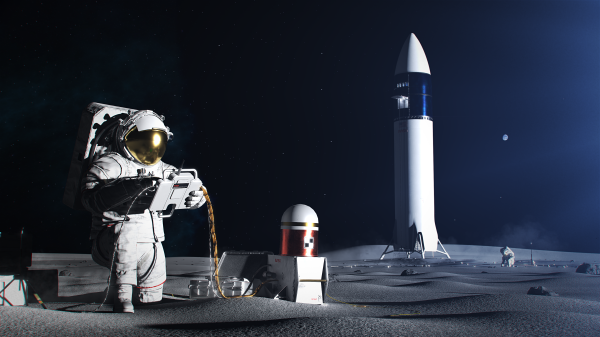NASA Refines National Space Technology Development Priorities
As NASA focuses on exploring the Moon, Mars, and the solar system for the benefit of humanity, the agency’s Space Technology Mission Directorate (STMD) is shifting how it prioritizes technology development. As part of this refinement effort, NASA is asking the American aerospace community for feedback on nearly 190 national space technology needs – or […]

3 min read
Preparations for Next Moonwalk Simulations Underway (and Underwater)

As NASA focuses on exploring the Moon, Mars, and the solar system for the benefit of humanity, the agency’s Space Technology Mission Directorate (STMD) is shifting how it prioritizes technology development. As part of this refinement effort, NASA is asking the American aerospace community for feedback on nearly 190 national space technology needs – or shortfalls – it has identified for future space exploration and science endeavors.
“Our ambitious future missions pose many unique challenges, and STMD is positioned – as the nation’s tech base for civil space – to innovate and advance solutions for those problems,” said Dr. Kurt Vogel, associate administrator for Space Technology at NASA Headquarters in Washington. “STMD is developing many critical technologies, but shifting to a more open and collaborative approach allows us to better prioritize our efforts and align with key stakeholder needs while ensuring we all get the most bang out of our investments.”
NASA aims to collect broad aerospace community feedback on critical technology shortfalls – like additive manufacturing, cryogenic fluid management, in-situ resource utilization, and others – ahead of future operations on the Moon and Mars. Understanding and prioritizing the most important and impactful efforts allows STMD to appropriately direct available resources to best support mission needs for NASA and the nation.
Over the next month, NASA’s key technology stakeholders, including U.S. industry, academia, and other government agencies, will participate in virtual meetings, provide feedback, and submit their shortfall priorities to the agency. NASA will process the data and aggregate a final list in order of priority, and it plans to make the final list available to stakeholders and the public.
Once the shortfalls are prioritized, NASA will evaluate its ongoing technology development efforts against those priorities to identify any required adjustments within its current portfolio. NASA expects the shortfall prioritization to pinpoint new investments within STMD or in partnership with its stakeholders. This effort may also open future opportunities to grow new commercial markets and foster the burgeoning U.S. space economy.
NASA plans to ask for community feedback and conduct workshops annually to reassess its investments and ensure it is productively engaging stakeholders and incorporating end-user feedback in its future planning. The agency will continuously refine the process to guarantee it remains valuable to all involved parties.
“Our prioritization process must be rigorous, detailed, and consistent year-over-year,” said Vogel. “We intend to be open and transparent, build trust, and provide a valuable tool for STMD and our stakeholders to guide investment strategies across the civil space community.”
To review the list of technology shortfalls and add input to STMD’s prioritization effort, visit:
Jimi Russell
Headquarters, Washington
202-358-1600
james.j.russell@nasa.gov
Share
Related Terms
What's Your Reaction?



















.jpg?#)




































